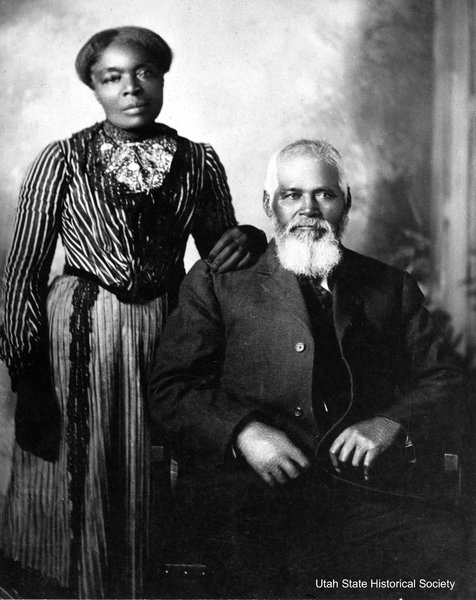Dublin Core
Title
Description
Where water is, people gather. This was true for Indigenous peoples of Utah, as well as Mormon colonists and African American settlers who arrived in the 19th century. During a period where Black Americans faced extreme discrimination, the waters of Millcreek Canyon that flow from the Wasatch Mountains provided a place of community and refuge to some of Utah’s first Black residents.
Knowing that the arid region of Utah would pose a challenge to farming, some southern Mormon converts sent enslaved people ahead of them in 1847 to prepare the land for their arrival. Some of the first Mormon homes, gardens, and canals were built by enslaved people. After slavery was abolished in Utah in 1862, many Black residents were given the opportunity to acquire land. They looked outside Salt Lake City to the areas now known as Cottonwood Heights, Fort Union, and Millcreek to build bountiful orchards and farms, and start their new lives as freed individuals. According to US census data from the late 19th century, these Black settlers usually lived close together. Many families intermarried and appear to have helped one another adjust to their new lives after enslavement. Later in life, children of these black homesteaders fondly called the Millcreek farm area “The Hill” and remembered riding up to it from State Street in a horse-drawn buggy.
In Millcreek, Mormon millwrights used the canyon’s powerful waters to make lumber and grist mills. The water was strong enough to divert into canals that watered some of Utah’s very first fruit trees. Black settlers like Samuel Chambers purchased Millcreek property to farm and sell produce to raise money to help his family reunite in Utah after being separated under slavery. In the desert of Utah, communal efforts to utilize water resources made this kind of settlement possible. But for Black farmers like Chambers, buying land in Millcreek would have also been an important symbol of newfound freedom, stability, and independence in the aftermath of the Civil War.
Creator
Source
_______________
See Tonya Reiter, “Life on the Hill: The Black Farming Families of Mill Creek,” Journal of Mormon History 44 No. 4 (October 2018); Ronald G. Coleman, “Blacks in Utah History: An Unknown Legacy,” The Peoples of Utah, ed. by Helen Z. Papanikolas (Salt Lake City, UT: Utah State Historical Society, 1976); Lindsay Adams, “Legacy of the Black Pioneer,” Utah Historical Markers, accessed January 2022; Trent Toone, “One of the first African Americans to arrive in the Salt Lake Valley honored on Memorial Day,” May 31, 2019, Deseret News, accessed January 2022.

